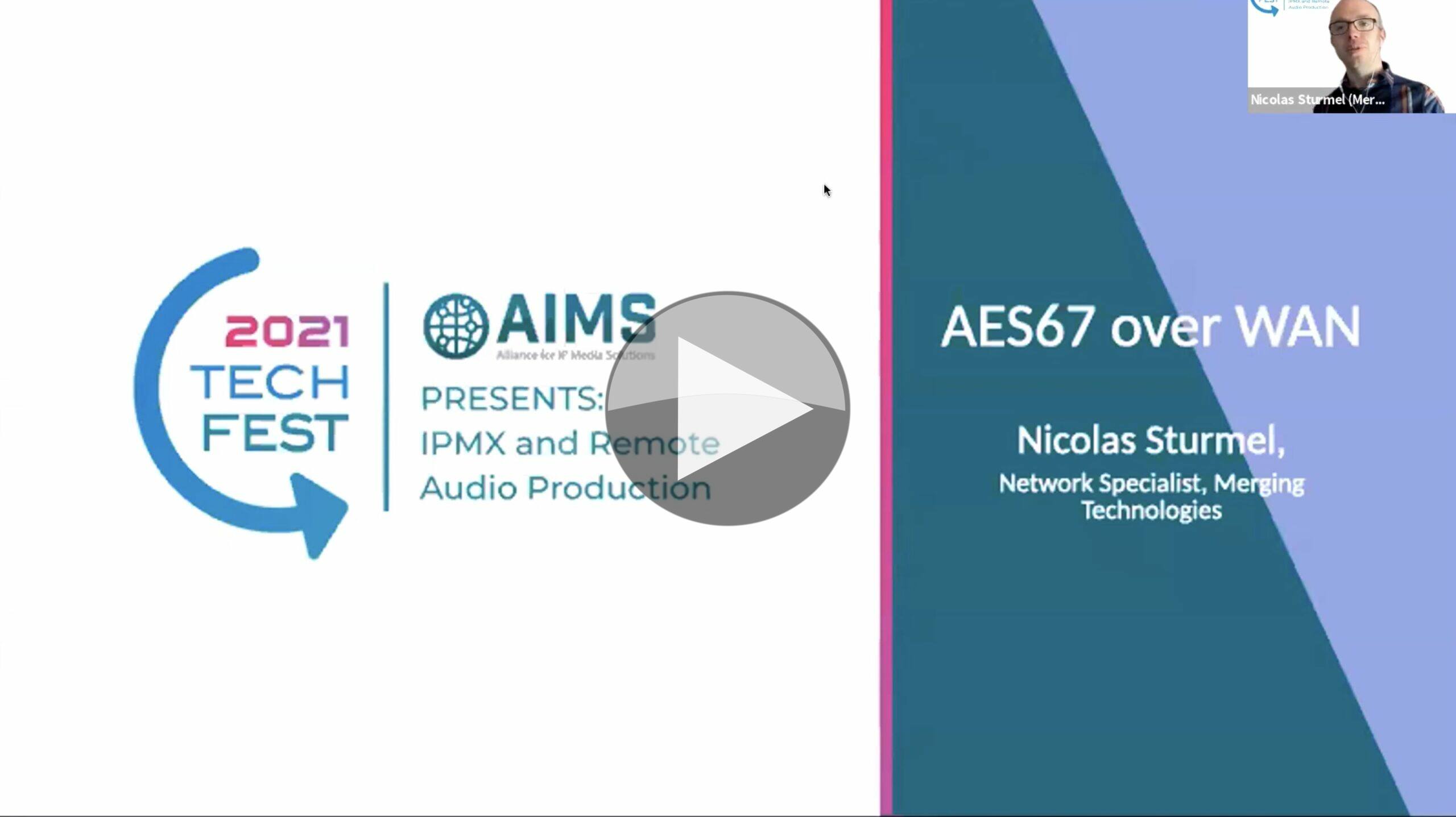It can be tempting to treat a good quality WAN connection like a LAN. But even if it has a low ping time and doesn’t drop packets, when it comes to professional audio like AES67, you can help but unconver the differences. AES67 was designed for tranmission over short distances meaning extremely low latency and low jitter. However, there are ways to deal with this.
Nicolas Sturmel from Merging Technologies is working as part of the AES SC-02-12M working group which has been defining the best ways of working to enable easy use of AES67 on the WAN wince the summer. The aims of the group are to define what you should expect to work with AES67, how you can improve your network connection and give guidance to manufacturers on further features needed.
WANs come in a number of flavours, a fully controlled WAN like many larger broadacsters have which is fully controlled by them. Other WANs are operated on SLA by third parties which can provide less control but may present a reduced operating cost. The lowest cost is the internet.
He starts by outlining the fact that AES67 was written to expect short links on a private network that you can completely control which causes problems when using the WAN/internet with long-distance links on which your bandwidth or choice of protocols can be limited. If you’re contributing into the cloud, then you have an extra layer of complication on top of the WAN. Virtualised computers can offer another place where jitter and uncertain timing can enter.
The good news is that you may not need to use AES67 over the WAN. If you need precise timing (for lip-sync for example) with PCM quality and low latencies from 250ms down to as a little as 5 milliseconds do you really need AES67 instead of using other protocols such as ACIP, he explains. The problem being that any ping on the internet, even to something fairly close, can easily have a varying round trip time of, say, 16 to 40ms. This means you’re guaranteed 8ms of delay, but any one packet could be as late as 20ms. This variation in timing is known as the Packet Delay Variation (PDV).
Not only do we need to find a way to transmit AES67, but also PTP. The Precise Time Protocol has ways of coping for jitter and delay, but these don’t work well on WAN links whether the delay in one direction may be different to the delay for a packet in the other direction. PTP also isn’t built to deal with the higher delay and jitter involved. PTP over WAN can be done and is a way to deliver a service but using a GPS receiver at each location is a much better solution only hampered by cost and one’s ability to see enough of the sky.
The internet can lose packets. Given a few hours, the internet will nearly always lose packets. To get around this problem, Nicolas looks at using FEC whereby you are constantly sending redundant data. FEC can send up to around 25% extra data so that if any is lost, the extra information sent can be leveraged to determine the lost values and reconstruct the stream. Whilst this is a solid approach, computing the FEC adds delay and the extra data being constantly sent adds a fixed uplift on your bandwidth need. For circuits that have very few issues, this can seem wasteful but having a fixed percentage can also be advantageous for circuits where a predictable bitrate is much more important. Nicolas also highlights that RIST, SRT or ST 2022-7 are other methods that can also work well. He talks about these longer in his talk with Andreas Hildrebrand
Nocals finishes by summarising that your solution will need to be sent over unicast IP, possibly in a tunnel, each end locked to a GNSS, high buffers to cope with jitter and, perhaps most importantly, the output of a workflow analysis to find out which tools you need to deploy to meet your actual needs.
Watch now!
Speaker
 |
Nicolas Sturmel Network Specialist, Merging Technologies |


